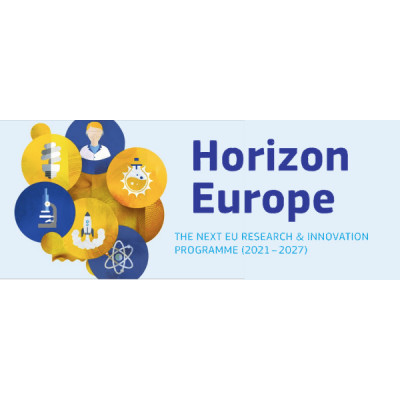Share
Print

Call Updates
Jan 16, 2023 10:26:50 AM
CALL UPDATE: FLASH CALL INFO
An overview of the evaluation results (flash call info) is now available under the "Topic conditions and documents" section on the topic page.
Sep 22, 2022 6:19:01 PM
CALL UPDATE: PROPOSAL NUMBERS
Call HORIZON-JTI-CLEANH2-2022-2 has closed on the 20/09/2022.
74 proposals have been submitted.
The breakdown per topic is:
HYDROGEN VALLEYS
Evaluation results are expected to be communicated in January 2023.
Mar 31, 2022 1:46:00 PM
The submission session is now available for: HORIZON-JTI-CLEANH2-2022-06-02(HORIZON-JU-IA)
Hydrogen Valleys (small-scale)
TOPIC ID: HORIZON-JTI-CLEANH2-2022-06-02
Programme: Horizon Europe Framework Programme (HORIZON)
Call: HORIZON-JTI-CLEANH2-2022 (HORIZON-JTI-CLEANH2-2022-2)
Type of action: HORIZON-JU-IA HORIZON JU Innovation Actions
Type of MGA: HORIZON Action Grant Budget-Based [HORIZON-AG]
Deadline model: single-stage
Planned opening date: 31 March 2022
Deadline date: 20 September 2022 17:00:00 Brussels time
Building on the successful experience of previous years (Hydrogen Valleys in the FCH 2 JU call 2019 and Hydrogen Islands in the FCH 2 JU call 2020), this topic calls for the deployment of a flagship[1] Hydrogen Valley in areas of Europe with no or limited presence of Hydrogen Valleys such as, but not necessarily limited to, Central and Eastern European Countries.
Proposals under this topic are expected to demonstrate how they contribute to the objectives of the European Hydrogen Strategy and the European Green Deal.
Project results are expected to contribute to all of the following expected outcomes:
Project results are expected to contribute to all of the following objectives of the Clean Hydrogen JU SRIA for H2 Valleys. In particular:
In addition, proposals should demonstrate how they intend to reach the KPIs of the Clean Hydrogen JU SRIA 2021-2027 for each of the technologies deployed in the H2 Valley.
Scope:A Hydrogen Valley is covering a defined geographical area in which hydrogen serves in general more than one end user or application in mobility, industry and energy. They typically comprise a substantial financial investment and cover as much as possible the necessary steps in the hydrogen value chain, from production (and often even dedicated renewable electricity production) to subsequent storage and its transport & distribution to various off-takers. Hydrogen Valleys are starting to form regional "hydrogen economies”. Such projects are necessary for piloting global hydrogen markets and should be expanded in number or scale to demonstrate the full range of benefits from the use of hydrogen as an energy carrier.
The scope of this topic is to develop, deploy and demonstrate a hydrogen valley having the aim to increase in size and characteristics overtime. Particular attention is given to actions supporting the design and development of a Hydrogen Valley in areas of Europe with no or limited presence of Hydrogen Valleys such as, but not necessarily limited to, Central and Eastern European Countries.
Technical
Proposals should:
Size and characteristics of the H2 Valley demonstration
Proposals should:
The volumes of H2 produced and distributed for the different end uses should be consistent with the amount of investment considered.
H2 Markets
Proposals should demonstrate existing and new markets for renewable hydrogen, especially when applications are used in synergies.
Economic growth
Proposals should:
Impact and replicability
Proposals should:
Commitment of stakeholders and additional financing/funding
Applicants may consider additional synergies with other Programmes (e.g. European Structural and Investment Funds, Recovery and Resilience Facility, Just Transition Fund, Connecting Europe Facility, Innovation Fund, Modernisation Fund, LIFE, etc.) and/or clustering with other projects within Horizon Europe or funded under other EU, national or regional programmes, or having loans through the EIB or other promotional or commercial banks; such synergies should be reflected in a financing structure and strategy describing the business model, including envisaged sources of co-funding/co-financing and in line with state-aid rules.
Evidence of the Commitment and role of public authorities (Member States, Regions and Cities) and of any other necessary stakeholders at least in the form of Letters of Intent (LOIs) should be provided. The practical implementation of this LOIs will be followed during the Grant Agreement implementation.
This topic is expected to contribute to EU competitiveness and industrial leadership by supporting a European value chain for hydrogen and fuel cell systems and components.
It is expected that Guarantees of origin (GOs) will be used to prove the renewable character of the hydrogen that is produced/used. In this respect consortium may seek out the issuance/purchase and subsequent cancellation of GOs from the relevant Member State issuing body and if that is not yet available the consortium may proceed with the issuance/purchase and cancellation of non-governmental certificates (e.g CertifHy[9]).
Proposals should provide a preliminary draft on ‘hydrogen safety planning and management’ at the project level, which will be further updated during project implementation.
Proposals are expected to contribute towards the activities of Mission Innovation 2.0 - Clean Hydrogen Mission. Cooperation with entities from Clean Hydrogen Mission member countries, which are neither EU Member States nor Horizon Europe Associated countries, is encouraged (see section 2.2.6.8 International Cooperation).
The TRL of the applications in the project should be at least 6 at the beginning of the project while the overall concept should target a TRL 8 at the end of the project.
At least one partner in the consortium must be a member of either Hydrogen Europe or Hydrogen Europe Research.
The maximum Clean Hydrogen JU contribution that may be requested is EUR 8.00 million – proposals requesting Clean Hydrogen JU contributions above this amount will not be evaluated.
The conditions related to this topic are provided in the chapter 2.2.3.2 of the Clean Hydrogen JU 2022 Annual Work Plan and in the General Annexes to the Horizon Europe Work Programme 2021–2022 which apply mutatis mutandis.
[1]For definition of flagship see section 5.3. of the Clean Hydrogen JU Strategic Research and Innovation Agenda 2021 – 2027
[2]As defined in the EU Taxonomy – see: https://eur-lex.europa.eu/resource.html?uri=cellar:d84ec73c-c773-11eb-a925-01aa75ed71a1.0021.02/DOC_2&format=PDF, p.57
[3]https://www.bighit.eu/
[4]https://heavenn.org/
[5]https://greenhysland.eu/
[6]https://s3platform.jrc.ec.europa.eu/hydrogen-valleys
[7]https://www.hy.land/
[8]http://mission-innovation.net/missions/hydrogen/
[9]https://www.certifhy.eu/
